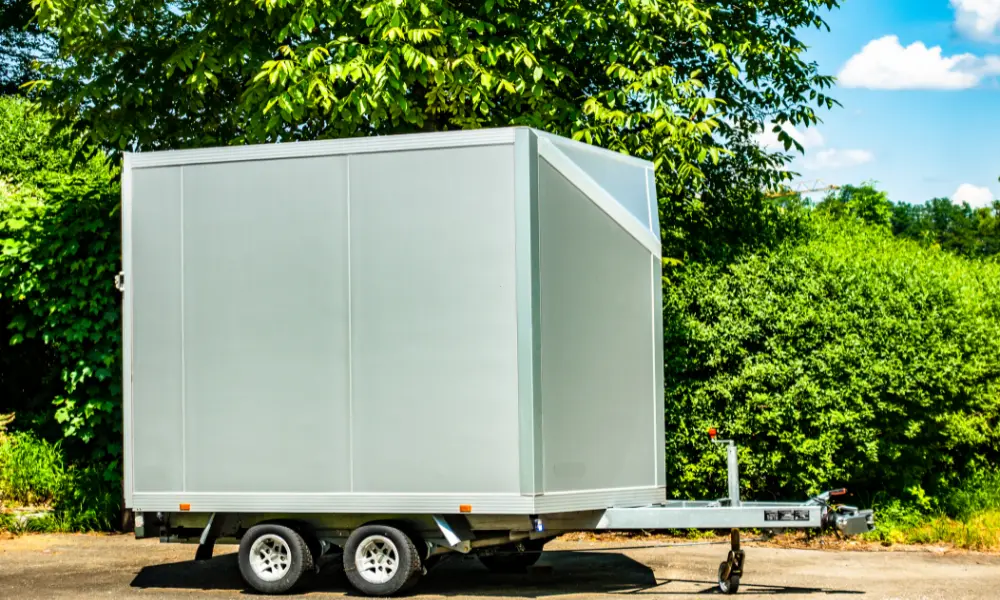If you drive a car in Delaware, understanding vehicle inspection requirements is essential for staying on the right side of the law and ensuring your safety on the road. Passing the inspection means your vehicle’s safety equipment is in good working order and meets emissions standards. Worried about how to prepare? We’ll guide you through the steps and tips to make the process smooth and stress-free.
Overview of the Delaware Vehicle Inspection Program
The Delaware Vehicle Inspection Program ensures that vehicles on the road meet safety and environmental standards. This program covers the inspection process, including safety checks and emissions testing, which helps reduce accidents and pollution.
Purpose and Importance
The Delaware Vehicle Inspection Program aims to keep the roads safe and the air clean. By inspecting vehicles, the state can identify and address potential safety hazards before they cause accidents.
This program is crucial because it reduces the number of unsafe vehicles on the road. Regular inspections catch problems like faulty brakes or worn-out tires, making the roads safer for everyone.
Emissions testing is a key part of this program. It helps ensure that vehicles meet environmental standards, reducing the amount of harmful pollutants released into the air. This is especially important in areas where air quality is a concern.
General Requirements
Before you can title your vehicle in Delaware, it generally must pass a safety and emissions inspection. The Delaware Division of Motor Vehicles (DMV) performs these inspections at their facilities at no cost.
Safety Inspection: This includes checking essential parts such as brakes, tires, lights, and seat belts. Ensuring that these components are in good condition can prevent accidents and injuries.
Emissions Testing: This is done to ensure your vehicle meets the National Ambient Air Quality Standard (NAAQS) for ozone. Failing this test may require repairs to your vehicle’s exhaust system to reduce emissions.
New vehicles sold by dealers may be exempt from these inspections if they provide a Delaware Application for Title (MV212A form). This makes the process quicker for buyers of new cars.
Pre-Inspection Checklist
Before you go for your vehicle inspection in Delaware, make sure you have all the necessary documents and your vehicle is ready. This checklist will help you ensure a smooth inspection process.
Required Documents
To undergo a vehicle inspection in Delaware, you need several important documents. The most crucial one is your vehicle registration card. This card verifies that your car is registered with the state.
You should also bring along your proof of insurance. This shows that your vehicle is insured, which is a requirement for the inspection.
If your current registration is about to expire, have your registration renewal notice with you. This document will help transition smoothly from the old registration to the new one.
Make sure all documents are up-to-date and ensure they are organized in a manner that is easy to access.
Vehicle Preparation Tips
Preparing your vehicle is equally important for a successful inspection. First, check all lights. This includes headlights, taillights, brake lights, turn signals, and license plate lights. They all need to be clean and in working order.
Inspect your tires for any bulges, fabric showing, bald areas, or cuts. The tread depth should be at least 2/32 inch.
Make sure there are no loose or missing parts on the exterior of the car. Clean the vehicle thoroughly, both inside and out. A clean car can make the inspection process faster and more pleasant for you and the inspector.
Make sure your child restraint safety seats are properly installed if you are carrying children under six years old. The Delaware Division of Motor Vehicles strictly enforces this rule to ensure child safety.
For more information, you can visit the Vehicle Services Inspections page.
Safety Inspection Criteria
To ensure your vehicle is safe to drive, Delaware requires a thorough safety inspection. The key areas checked include brakes, tires, lights, signals, windows, windshield, steering, and suspension. Keeping these parts in good condition helps protect everyone on the road.
Brakes and Tires
Your brakes are crucial for safety. Inspectors check for worn-out brake pads and ensure that the brake system operates correctly. If you hear squealing or grinding noises, it’s a sign they might need replacing.
Tires must be in good shape too. They should have at least 2/32 inch of tread depth. There should be no balding, bulges, or fabric showing. Proper tire pressure is also essential for maintaining control of your vehicle.
Lights and Signals
All lights on your car must work correctly. This includes headlights, brake lights, turn signals, and license plate lights. Make sure they are clean and properly aimed to avoid blinding other drivers.
Not only do functioning lights help you see at night, but they also make your vehicle visible to others. If a bulb is out, replace it before heading for your inspection. Even minor issues can make you fail the safety check.
Windows and Windshield
Your windows and windshield need to be in good condition. Inspectors will look for cracks, chips, or any other damage that might obstruct your view. Even minor cracks can quickly become a bigger problem.
Make sure your windshield wipers work well and can clear rain effectively. Clean windows and a clear windshield are vital for visibility, especially in bad weather. Fixing any issues beforehand can save you time and hassle.
Steering and Suspension
A properly functioning steering and suspension system are important for safe driving. Inspectors will check for looseness or unusual movement in the steering mechanism. They will also look at shock absorbers and struts.
If your car pulls to one side or you feel loose steering, it might be an issue. Addressing steering and suspension problems ensures your car handles well and reduces the risk of accidents. Regular checks can catch potential problems early.
Emissions Testing Criteria
When having your vehicle inspected in Delaware, several tests and inspections ensure it meets emission standards. These include checks on the gas cap and fuel system, On-Board Diagnostics (OBD), and tailpipe emissions.
Gas Cap and Fuel System Inspection
The gas cap and fuel system inspection is one of the initial steps in vehicle emissions testing. This test ensures that your gas cap forms a proper seal and that there are no leaks in your fuel system. A proper seal helps prevent the escape of fuel vapors, which contribute to air pollution.
Technicians will check for leaks and damage that could affect your vehicle’s exhaust emissions. If your gas cap is faulty, it can result in a failed emissions test, which means you’ll need to replace it and undergo a re-test.
On-Board Diagnostics (OBD) Testing
On-Board Diagnostics (OBD) II testing involves connecting a scan tool to your vehicle’s OBD system. This system is part of all modern cars and trucks and monitors key engine and emissions components like the catalytic converter.
During the test, the OBD system checks for errors in various subsystems, including those that could affect exhaust emissions. If the system detects an issue, it will produce a diagnostic trouble code (DTC). These codes help identify specific problems, such as issues with the catalytic converter, oxygen sensors, or other emission-related components.
Tailpipe Emissions Standards
The tailpipe emissions standards test measures the levels of pollutants emitted from your vehicle’s exhaust. Technicians use special equipment to analyze the concentration of harmful gases like carbon monoxide and hydrocarbons.
Your vehicle must meet specific limits for these pollutants to pass the emissions test. The standards vary depending on the vehicle’s model year and other factors. Failing to meet these emissions standards requires repairs to bring the vehicle into compliance before it can be retested and approved for use in Delaware.
Inspection for Different Vehicle Types
Different vehicle types have unique inspection requirements in Delaware. These standards ensure every vehicle on the road is safe and meets environmental regulations.
Passenger Cars and Light-Duty Vehicles
Passenger cars and light-duty vehicles must pass an inspection to be registered. This includes checks on brakes, tires, lights, and windshield wipers. An important part of this inspection is the motor vehicle emissions test, which measures pollutants your vehicle emits.
If your car is new and has never been titled in any state, the dealer might provide a Delaware Application for Title form, which can sometimes exempt you from the initial inspection. Make sure your car is in top condition to pass effortlessly.
Motorcycles and Trailers
Motorcycles and trailers have specific inspection standards too. Motorcycles undergo checks that include brakes, tires, and lights. Ensure your motorcycle’s exhaust system is working efficiently to meet emissions standards.
Trailers, depending on their gross vehicle weight (GVW), need different inspections. Light trailers are often checked for proper lights, brakes, and hitches. Heavier trailers may require more thorough inspections to ensure they can safely carry their loads.
Diesel Powered and Heavy Vehicles
Diesel powered vehicles and heavy-duty vehicles have stricter inspection criteria. These vehicles undergo detailed emissions tests to control the pollutants they emit.
This includes the On-Board Diagnostics (OBD-II) test for vehicles up to 8,500 lbs. For Gross Vehicle Weight Ratings (GVWR) exceeding this, a more comprehensive emission test is required. Heavier vehicles also have their brakes, tires, and safety systems thoroughly inspected to ensure they meet the strict safety standards.
Compliance and Waivers
Complying with vehicle inspection requirements in Delaware is essential for keeping your vehicle legally on the road. If you encounter issues meeting these requirements, you may be eligible for waivers.
Obtaining a Waiver
In Delaware, you might need a waiver if your vehicle fails the emissions inspection but you’ve made significant repairs. To qualify, repairs must be performed by a certified emission repair technician. The limit for repair costs depends on your vehicle’s model year and county of registration.
Delaware regulations set specific repair cost limits. For instance, the Vehicle Services FAQ’s detail that for older models, the limit is $75.00. For newer vehicles, the cost varies based on updated state regulations. Meeting these requirements might make your vehicle eligible for a Repair Waiver.
Repair and Retest Procedures
If your vehicle fails the initial inspection, you’ll need a Vehicle Inspection Report. This report lists trouble codes and required repairs. Ensure repairs are done by qualified emission repair technicians. These experts use specialized equipment to address the issues without tampering with any parts.
After completing the repairs, the vehicle needs to be retested. This ensures that all adjustments and fixes meet the state’s compliance standards. If the vehicle passes, it’s cleared for the road. Otherwise, further repairs may be necessary, or you might consider applying for a waiver if repair costs are too high.
Understanding Inspection Results
When you take your vehicle for inspection in Delaware, you receive a report indicating whether your car has passed or failed, along with specific codes explaining the results.
Pass and Fail Outcomes
If your vehicle passes the inspection, you get a Vehicle Inspection Report showing everything is up to standard. This report acts as proof that your car is safe and complies with regulations. Keep this document safe, as you may need it for your records or when renewing your registration.
Should your vehicle fail, the report will highlight the problem areas. Common reasons for failure include issues with the brakes, lights, emissions, or other critical safety features. You’ll need to get these problems fixed before you can pass the inspection lanes again.
Codes and Certification
The Vehicle Inspection Report is filled with codes that explain why your car passed or failed the inspection. These codes cover everything from minor issues like a malfunctioning light to major concerns such as brake failure or emissions problems. Understanding these codes helps you know what needs fixing.
Once your vehicle complies with all regulations, it receives the certification needed for registration renewal. For safety, children under six and weighing less than 60 lbs. must be in an approved safety seat during the inspection, as noted by the Delaware Child Restraint Law (Title 21, §4803).
By understanding these elements, you can ensure your passenger car meets all inspection requirements.















